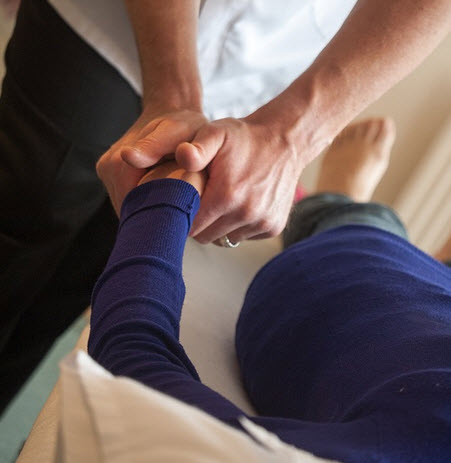Contents
Chiropractic is an alternative medicine chiefly focused on the diagnosis and treatment of mechanical disorders of the musculoskeletal system, especially the spine.
 Daniel David Palmer founded chiropractic in the 1890s. According to himself, he receive the inform from “the other world”. In the 20th century, his son Bartlett Joshua Palmer helped develop chiropractic and market it.
Daniel David Palmer founded chiropractic in the 1890s. According to himself, he receive the inform from “the other world”. In the 20th century, his son Bartlett Joshua Palmer helped develop chiropractic and market it.
The main chiropractic treatments technique is spinal manipulation therapy (SMT), but manual manipulation of other parts of the body are also important. A chiropractor works with bones, muscles, joints and other tissue.
Examples of countries where chiropractic is a well-established form of alternative medicine are Canada, USA, UK, and Australia. In these countries, a majority of the patients seeking treatment do so because of lower back pain. Neck pain is also a common reason for turning to a chiropractor.
Over time, several branches of chiropractic has developed. Some chiropractors know moves and treatments from several branches and will mix techniques during treatment sessions, while others strictly adhere to just one branch (“school”) of chiropractic.
Treatments
The most common treatment in chiropractic is spinal adjustment, also known as chiropractic adjustment. This is a manual maneuver where the chiropractor takes a three-joint complex past the normal range of movement, without dislocating or damaging the joints. As the chiropractor applies a sudden force, an audible release can often be heard. The goal is to increase the range of motion for the joints.
Examples of chiropractic techniques:
- Extremity adjustment
- Activator technique, where a spring-loaded tool is employed to deliver precise adjustments of the spine
- Cox/flexion-distraction, a gentle, low-amplitude adjustment process based on a combination of chiropractic and osteopathic principles. A special table with certain movable parts is required.
- Thompson technique, which require a drop table
- Sacro-Occipital technique
- Gonstead, where the spine is evaluated and specific adjustments are carried out that avoid rotational vectors
- Nimmo Receptor-Tonus technique
- Chiropractic biophysics technique
In addition to the treatments carried out by the chiropractor, the client will often be recommended to carry out certain health-promoting activities on their own, based on advice from the chiropractor. This can for instance involve:
- Improved ergonomics / posture
- Dietary changes
- Relaxation regimes
- Cryotherapy
- Physical exercises
- Early screen advice to catch possible disease / injury
History
Chiropractic was founded by Daniel David Palmer (1845-1913) in Davenport, Iowa in 1895.
Palmer used to be a magnetic healer, and he hypothesized that manual manipulation of the spine could cure a wide range of ailments in various parts of the body. Palmer’s ideas were fairly similar to those of the physician and surgeon Andrew Taylor Still who developed the alternative medicine osteopathy in Kansas in 1874. Both the chiropractic system and the osteopathic system are based on ideas about magnetic healing and bonesetting. Also, both systems were developed by charismatic men living in the Midwestern region of the USA.
 In 1898, Palmer founded the Palmer School of Chiropractic and started teaching chiropractic to a few students. In 1906, Palmer’s son Bartlett Joshua (B.J.) Palmer took over the school, after having learned chiropractic from his father. From this point, the number of enrolled students grew sharply.
In 1898, Palmer founded the Palmer School of Chiropractic and started teaching chiropractic to a few students. In 1906, Palmer’s son Bartlett Joshua (B.J.) Palmer took over the school, after having learned chiropractic from his father. From this point, the number of enrolled students grew sharply.
In these early days, chiropractic students learned that disease occurred when the flow of innate intelligence in the body was interrupted. This innate energy was seen as a kind of vitalistic nervous energy that represented God’s presence in man. Both Daniel David Palmer and his son seriously considered declaring chiropractic a religion, but declined since they wanted to avoid being confused with the Christian Science movement. Still, Daniel David Palmer claimed to have received his knowledge about chiropractic “from the other world”.
In 1907, Daniel David Palmer was convicted of practicing medicine without a license. He could chose between paying a fine or going to jail, and chose the latter.
Instrument controversy
Initially, Daniel David Palmer and his son refused to use any instruments during their treatments, but some other early chiropractors chose another route which led to a certain amount of contention within the chiropractic field.
In 1910, B.J. Palmer changed his mind and endorsed the use of X-rays as a diagnostic tool. Several conservative teachers and students left B.J. Palmer’s chiropractor school as a result of this policy change.
